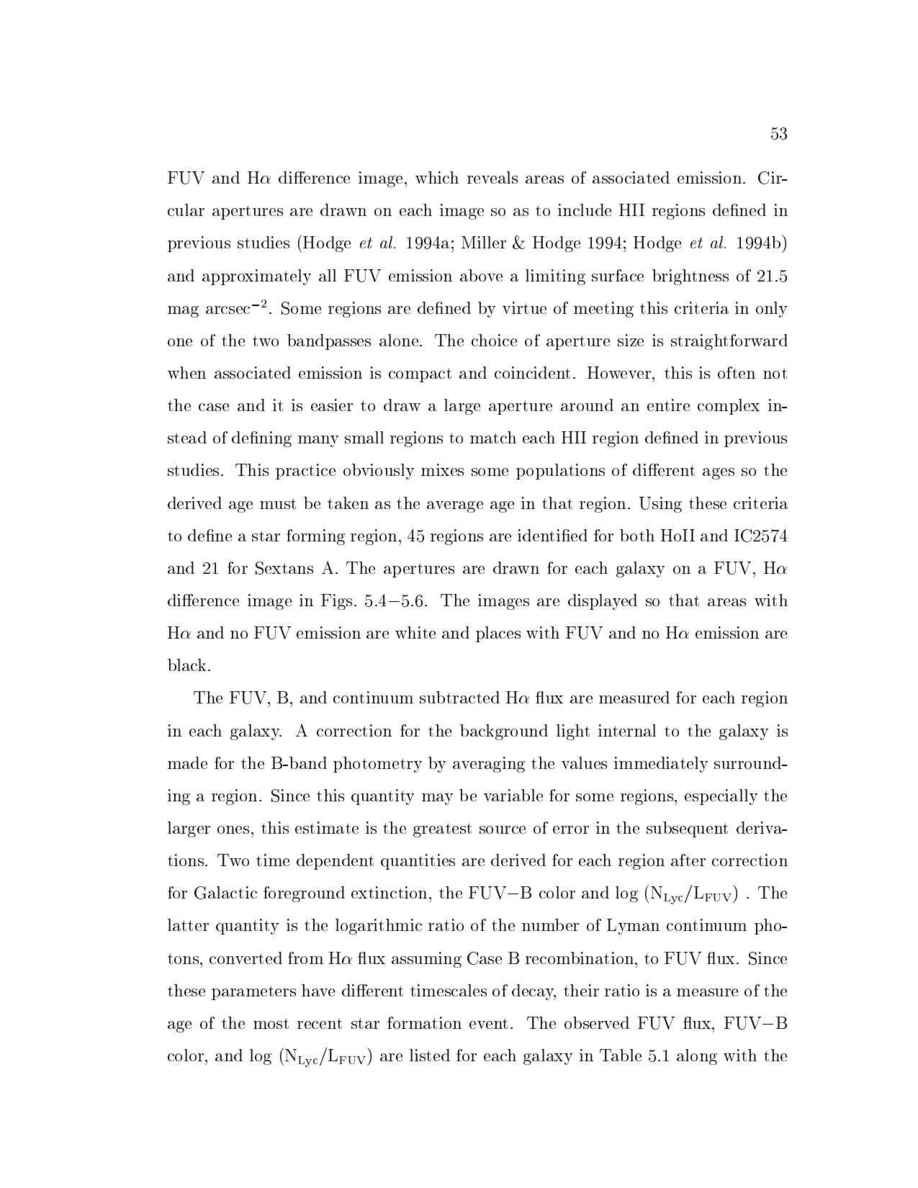
53
FUV and H di erence image, which reveals areas of associated emission. Cir-
cular apertures are drawn on each image so as to include HII regions de ned in
previous studies Hodge
et
al.
1994a; Miller & Hodge 1994; Hodge
et
al.
1994b
and approximately all FUV emission above a limiting surface brightness of 21.5
mag arcsec
,2
. Some regions are de ned by virtue of meeting this criteria in only
one of the two bandpasses alone. The choice of aperture size is straightforward
when associated emission is compact and coincident. However, this is often not
the case and it is easier to draw a large aperture around an entire complex in-
stead of de ning many small regions to match each HII region de ned in previous
studies. This practice obviously mixes some populations of di erent ages so the
derived age must be taken as the average age in that region. Using these criteria
to de ne a star forming region, 45 regions are identi ed for both HoII and IC2574
and 21 for Sextans A. The apertures are drawn for each galaxy on a FUV, H
di erence image in Figs. 5.4
,
5.6. The images are displayed so that areas with
H and no FUV emission are white and places with FUV and no H emission are
black.
The FUV, B, and continuum subtracted H ux are measured for each region
in each galaxy. A correction for the background light internal to the galaxy is
made for the B-band photometry by averaging the values immediately surround-
ing a region. Since this quantity may be variable for some regions, especially the
larger ones, this estimate is the greatest source of error in the subsequent deriva-
tions. Two time dependent quantities are derived for each region after correction
for Galactic foreground extinction, the FUV
,
B color and log N
Lyc
L
FUV
. The
latter quantity is the logarithmic ratio of the number of Lyman continuum pho-
tons, converted from H ux assuming Case B recombination, to FUV ux. Since
these parameters have di erent timescales of decay, their ratio is a measure of the
age of the most recent star formation event. The observed FUV ux, FUV
,
B
color, and log N
Lyc
L
FUV
are listed for each galaxy in Table 5.1 along with the
